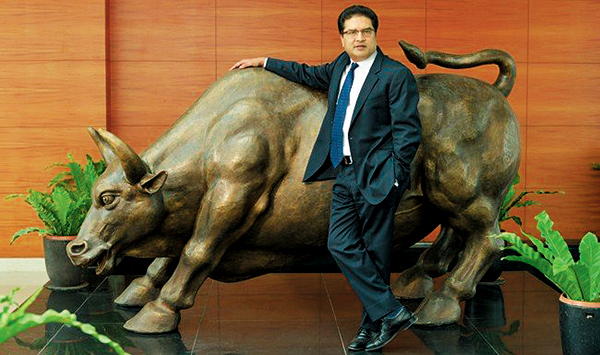Can you help with a few pointers to spot these opportunities?
You need to find growth which is not in the price. To do that you have to sit quietly and do your homework. Watching the market and listening to news channels on an hourly basis will not yield anything. You need zero distraction when digging deeper to find great opportunities. I would say even in a bad economic environment there are winners.
One more thing that is clear after this study: it is not necessary to buy these growth opportunities in a hurry. You often get a lot of time to analyse and there is nothing to regret because the growth and return are mostly back-ended. Even if you had missed buying Infosys in 1993 and bought it in 1997, you would have still made a lot of money if you had held on till today. If you missed investing at a very low price, have no fear in buying it later at a higher price because the growth is always ahead. Don’t be dogmatic about the entry price if there is enough growth.
What other insights did you get in your 2015 Mid-to-Mega study?
We looked at 1,098 stocks and segregated companies based on their market capitalisation. Top 100 companies with the highest market capitalisation are defined as mega 100. While the next set of companies from 100 to 300 in terms of market cap are defined as mid and below 300 ranking are mini.
In the mini-to-mega category, the return is the highest at 68% but the probability of finding such opportunities is 0.2%. Whereas if you compare mid-to-mega, the return is 33% but the probability is higher at 12%. The third category is mini-to-mid. Here as well, the return is good at 38% but the probability is very low at 3.4%. I am not saying that do not look for companies that can go from mini-to-mega or mini-to-mid but the study says that the probability is less when the return is high.
People buy very small companies and make money but that mostly happens when they have insight about the business or the management of these companies, which may not be apparent in some of the public filings. Let’s assume while travelling in an airplane, the person sitting next to you happens to be the promoter and while talking he might describe in detail the company he is running.
However, that does not happen every day and you have to be really lucky to make money if you are living on hope or faith which was inculcated by someone. If you don’t win the lottery, you will be sitting with those dead holdings forever.
The other problem with small companies is that you do not have a long enough track record. You have to rely on whatever little information is available in the market. It is in mid-to-mega where you actually have a track record which enables a proper due diligence.
How would you screen a potential Mid-to-Mega stock?
Do the math in reverse. Let’s assume to go from mid-to-mega in five years, a company needs to have a minimum market capitalisation of ₹40,000 crore at the end of the period. You need to ask if it can get there given its current size. If the market cap of your company is say ₹4,000 crore and if it has to become ₹40,000 crore, it will have to grow its profit tenfold in five years assuming that the P/E remains the same. Even at 20 P/E, the company will have to make a profit of ₹2,000 crore. Can it make it and in that period is where the real art and science comes into the picture. At this moment you have got to ask which are the businesses which can do this. So you have to pick and choose companies which have the growth and profitability levers to get to that level.
One very important aspect to this is that we found that almost 80% of the companies in the mega category are leaders in their respective industries. What I mean to say is that with the mid-caps also, one should look at companies which have some leadership trait; like we had Page Industries which was the leader in its segment and yet was available at a very reasonable valuation. Even if you find the second or third player in the industry with a capable management, there is high probability of your investment doing well over a period of time.
You can read part one of the interview here.











